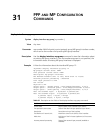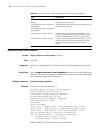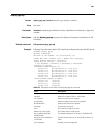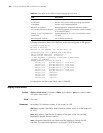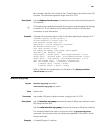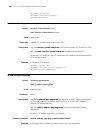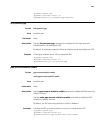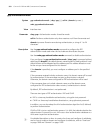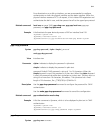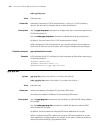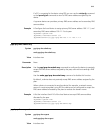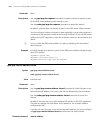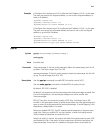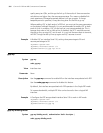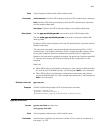
510 CHAPTER 31: PPP AND MP CONFIGURATION COMMANDS
ppp authentication-mode
Syntax ppp authentication-mode { chap | pap } [ [ call-in ] domain isp-name ]
undo ppp authentication-mode
View Interface view
Parameter chap, pap: Authentication modes. Use either mode.
call-in: Performs authentication only when receives a call from the remote end.
domain isp-name: Domain name during authentication, a string of 1 to 24
characters.
Description Use the
ppp authentication-mode command to configure the PPP
authentication mode used when the local device authenticates the peer.
Use the
undo ppp authentication-mode command to disable authentication.
If you configure the ppp authentication-mode { chap | pap } command without
specifying the domain, the default domain named system is used by default. Local
authentication will be adopted and the address pool for address allocation must
be the one you have configured for this domain.
If the domain is specified, you must configure an address pool in the specified
domain.
If the username received includes a domain name, this domain name will be used
for authentication (if the name does not exist, authentication is denied).
Otherwise, the domain name configured for PPP authentication will be used.
If the username does not include a domain name, and the domain name
configured for PPP authentication does not exist, authentication is denied.
By default, PPP authentication is not performed.
There are two types of PPP authentication: PAP and CHAP.
■ PAP is a two-way handshake authentication, using plain text password.
■ CHAP is a three-way handshake authentication, using ciphertext password.
In addition, you can also adopt the AAA authentication algorithm list (if defined)
to perform authentication.
CHAP or PAP is just an authentication process. It is AAA that decides whether the
authentication is successful or not. AAA uses a local authentication database or a
AAA server to perform authentication.
n
For detailed description on how to create a local user and configure its attributes,
and on how to create a domain and configure its attributes, refer to “local-user”
on page 1940 and “domain” on page 1936.




